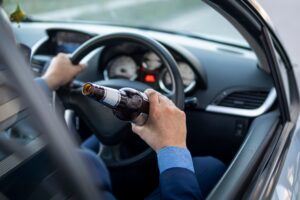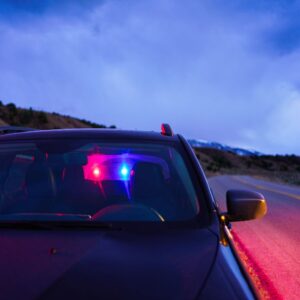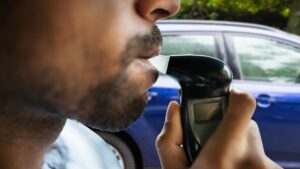 How to Beat a DWI Charge in New York
How to Beat a DWI Charge in New York
Law enforcement stops you while on the road, and after some questioning, the officer tells you to step out of your car and walk a straight line. Your heart pounds as you realize this isn’t a routine traffic stop. You’re about to perform field sobriety tests that could determine whether you are arrested for driving while intoxicated (DWI) in New York. Many people are unaware that these tests are not foolproof, and there are attorneys with experience regularly challenging field sobriety tests in courtrooms across the state. Recognizing these weaknesses gives you a fighting chance if you face DWI charges based on field sobriety test results.
The Three Standardized Field Sobriety Tests
In New York, law enforcement officers are trained to use three specific tests developed by the National Highway Traffic Safety Administration (NHTSA) to determine if a driver is impaired. These are the only tests considered standardized and scientifically validated by NHTSA.
The Horizontal Gaze Nystagmus (HGN) Test
This is typically the first test an officer will administer. The officer asks you to follow a small object, like a pen or a light, with your eyes. They are watching for an involuntary jerking of the eye, which can be an indicator of alcohol impairment. They will look for:
- A lack of smooth pursuit, such as the eye moving in a jerky manner;
- Distinct nystagmus (the involuntary jerking) at the maximum deviation, like when the eye is moved as far to the side as it can go; and
- The onset of nystagmus before the eye reaches a 45-degree angle.
The issue with HGN testing is that multiple factors, such as medical conditions, medications, and fatigue, can produce similar eye movements that officers can mistakenly associate with alcohol. The test also requires precise administration. The officer must hold the stimulus at the correct distance, move it at the right speed, and look for specific clues at exact angles.
Walk-and-Turn Test
You’re asked to walk nine steps heel-to-toe along a straight line, turn around in a specific manner, and walk nine steps back. The officer watches for eight different clues that supposedly indicate impairment:
- Starting too soon,
- Losing your balance,
- Stepping off the line,
- Stopping while walking,
- Failing to touch heel-to-toe,
- Using your arms to balance,
- Making an improper turn, and
- Taking the incorrect number of steps.
This test assumes you have perfect balance, coordination, and the ability to follow complex instructions under stress. People with back problems, inner ear issues, or certain footwear often can’t perform this test properly, regardless of their sobriety level.
One-Leg Stand Test
Like the walk-and-turn test, this is another divided attention test. You must stand on one foot while counting out loud for 30 seconds. The officer looks for four clues:
- Swaying,
- Using arms for balance,
- Hopping, or
- Putting your foot down.
Age, weight, medical conditions, and surface conditions all affect performance on this test. The NHTSA manual itself acknowledges that people over 50 or more than 50 pounds overweight have difficulty with this test even when sober.
Field Sobriety Test Accuracy Problems
The accuracy rates for field sobriety tests aren’t as impressive as most expect. Even under perfect laboratory conditions with trained officers, these tests produce false positives at alarming rates.
According to NHTSA’s studies, the three-test battery correctly identifies impaired drivers only 82% of the time when administered perfectly. This means that nearly one in five people who fail these tests aren’t actually impaired by alcohol.
Real-world conditions make accuracy rates much worse. Tests administered on busy roadways, in poor weather, or by inadequately trained officers have significantly higher error rates. Factors like stress, anxiety, and the inherently intimidating nature of police encounters affect performance regardless of alcohol consumption.
The standardized field sobriety tests were developed and validated using healthy volunteers under controlled conditions. They weren’t designed to account for the various medical conditions, physical limitations, and environmental factors present during actual traffic stops.
Your Right to Refuse a Field Sobriety Test
In New York, field sobriety tests are voluntary and can be declined politely and respectfully. Unlike a chemical test after a lawful arrest, there are no automatic penalties from the DMV for refusing a test. However, refusal may be used as evidence for probable cause for a DWI arrest, which is weaker than poor performance on the tests themselves. The best option is respectfully declining, as test results will likely be used against you.
DWI Field Test Defense Strategies That Work
Defense attorneys use several effective strategies to contest field sobriety test evidence. These methods emphasize the tests’ scientific limitations and each case’s unique circumstances.
Challenging Officer Training and Qualifications
Police officers must complete specific training to administer standardized field sobriety tests properly. Defense attorneys frequently review an officer’s training records, certification status, and experience with field sobriety tests. Insufficient training can serve as grounds to challenge field sobriety test results.
Video Evidence Analysis
Dashboard and body camera footage often contradict police officers’ written reports about field sobriety test performance. Video evidence can show administration errors, environmental problems, or performance that doesn’t match the officer’s description. Attorneys carefully analyze videos frame by frame to identify discrepancies between what actually happened and what the officer reported.
Medical Evidence and Expert Testimony
Medical records and expert witness testimony can explain poor field sobriety test performance based on factors unrelated to alcohol consumption. Neurologists, physicians, and other medical professionals can testify to how various conditions affect balance, coordination, and eye movements. This evidence helps establish reasonable doubt about whether you were impaired and helps juries understand that failing field sobriety tests doesn’t necessarily mean someone was driving under the influence.
We’ll Challenge Field Sobriety Test Results
At Greenspan & Greenspan, we believe that an imperfect roadside test should not decide your future. With over 60 years of service to New York drivers, we have built a reputation for our commitment to honest advocacy and unwavering dedication to our clients. When you work with us, you get a determined legal team that will stand by your side, fighting for your rights and working toward a resolution that protects your freedom. Contact us today for a free consultation.
Resources
- DWI Detection and Standardized Field Sobriety Test (SFST) Resources. National Highway Traffic Safety Administration (NHTSA), link.
- Efforts to Reduce Impaired Driving. New York State Governor’s Traffic Safety Committee, link.
- Vehicle and Traffic Law § 1192. New York State Senate, link.
- Vehicle and Traffic Law § 1194. New York State Senate, link.
- Chemical analyses of blood, urine, breath, or saliva for alcohol content. New York State Department of Health, Part 59, link.







